Renard R-31
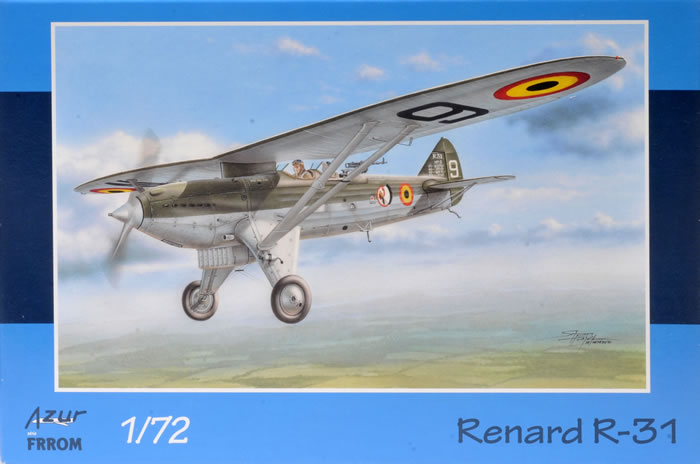
Azur FRROM, 1/72 scale
S u m m a r y : |
Catalogue Number: |
Azur FRROM Kit No. FR0039 - Renard R-31 |
Scale: |
1/72 |
Contents & Media |
Details below. |
Price: |
£21.60 EU Price (£18.00 Export Price) plus shipping available online from Hannants |
Review Type: |
First Look. |
Advantages: |
Nicely moulded parts with no flash, excellent instructions and fine details and a goodly range of schemes. |
Disadvantages: |
None bar the usual short-run lack of locating pins.. |
Conclusions: |
A nicely produced kit of a bit of a rarity with a good set of schemes. Great to see these 1930s oddities get an airing – now we need a few British ones from that era! How about a Dragon, please! |
Reviewed by
Graham Carter

HyperScale is proudly sponsored by
Squadron.com
The small Belgian manufacturer Renard received an order for 28 of these twin seat parasol-wing aircraft in 1934, later another six were added, to replace the rather ancient Breguet XIX observation aircraft of the Aéronautique Militaire Belge. The R-31 was armed with two FN-Browning 7.62 mm machine guns, one forward firing and one on a ring in the back seat. There was also a rarely used provision for dropping four 10 kg bombs under the wings. The aircraft received the military registrations N-1 to N-35. It was the sole indigenous design to serve in a military capacity.
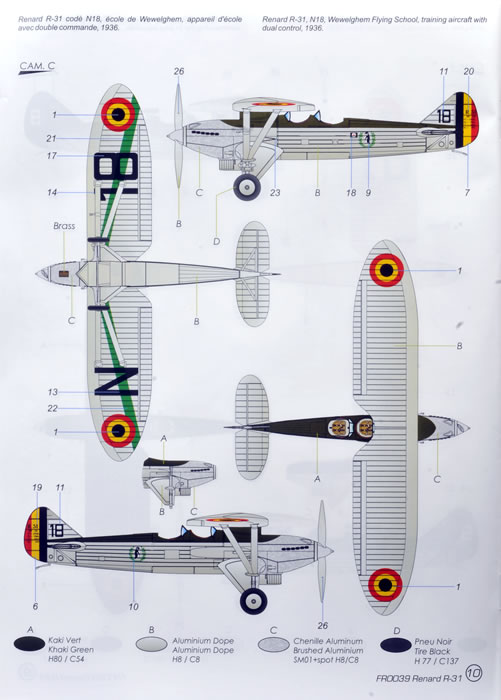
It was a surprisingly large aircraft for a parasol, with a wingspan of over 47’ and a length of just over 30’. Its 480hp RR Kestrtel engine drove the beast to a maximum speed of 183 mph (294 kph) and she cruised at 148mph ( 238kph). The range was around 400 miles (650km). Used by 2 squadron of the Belgian Air Force leading up to WWII, a few were still in service when the Germans invaded in May 1940, not lasting long at all. None survive but a group of volunteers at the Royal Army Museum at Brussels is building a 1/1 scale replica using the original blueprints.
Information from the instruction sheet , Wikipedia and http://www.belgian-wings.be
Supplied in Azur/FRROM’s usual strong top-opening cardboard box adorned with an attractive illustration is a single large sprue in a dark grey with the wings and main airframe, another smaller one with all the smaller details, a clear set of windscreens and a PE set of seat belts and airframe details, especially the machine gun.
Parts are really well moulded, with no hint of flash. Being short-run there are no locating pins but experience tells me that these kits go together really well.

Interior framework is moulded into the fuselage halves and the other interior parts look good. I would probably thin the seat sides down a little but apart from that all looks great.
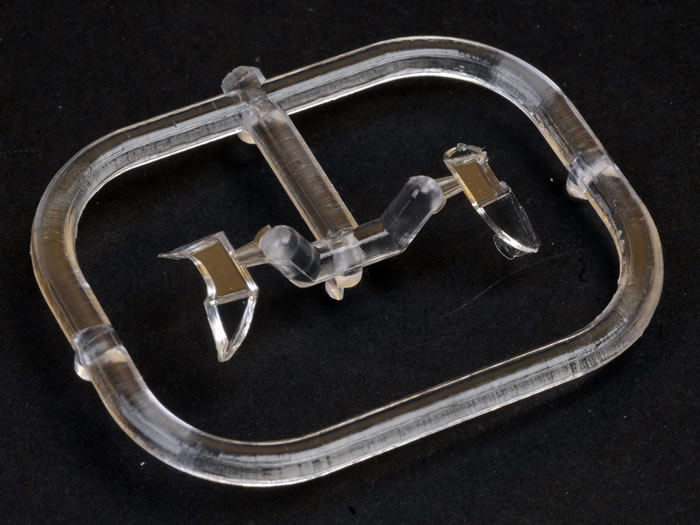
Instructions are in clear steps with paint details all along the way for Gunze colours but with names for those using other paints. A boon for modellers is that this aircraft requires no rigging!
Colours & Markings
Decals are supplied for three aircraft, one from each of the two squadrons ( 9 and 11) that were using it in service at the outbreak of WWII in the familiar dark green upper surface/aluminium lowers, and an earlier training scheme. The latter is overall aluminium with a narrow green fuselage top.
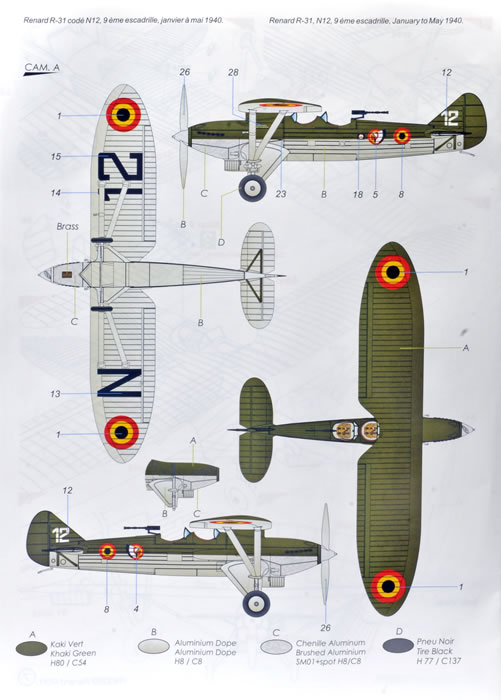
The three aircraft are represented in three colour schemes on the last 3 pages of the instructions.
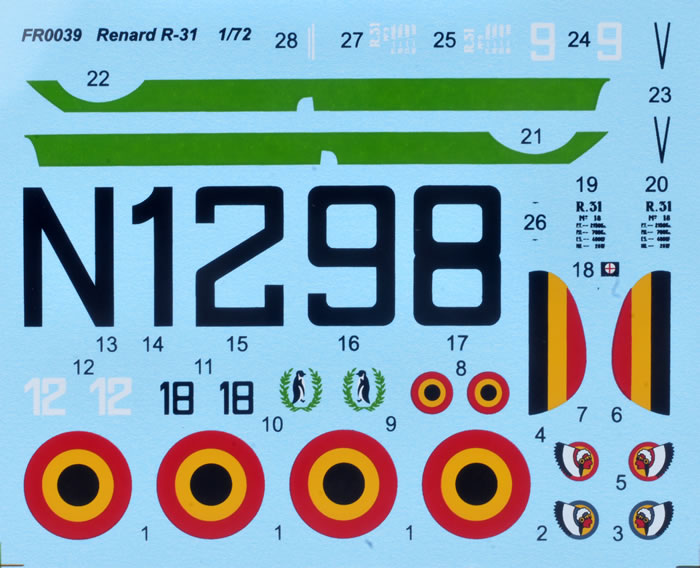
Decals look to be perfectly in register, and colour density is great, but care will need to used in applying the green under-wing stripes on the trainer.
This is a nicely produced kit of a bit of a rarity with a good set of schemes. Great to see these 1930s oddities get an airing – now we need a few British ones from that era! How about a Dragon, please!
Thanks to Azur FRROM for the review sample.
Review Text & Images Copyright © 2018 by Graham Carter
Page Created 20 March, 2018
Last updated
6 November, 2018
Back to HyperScale Main Page

|
